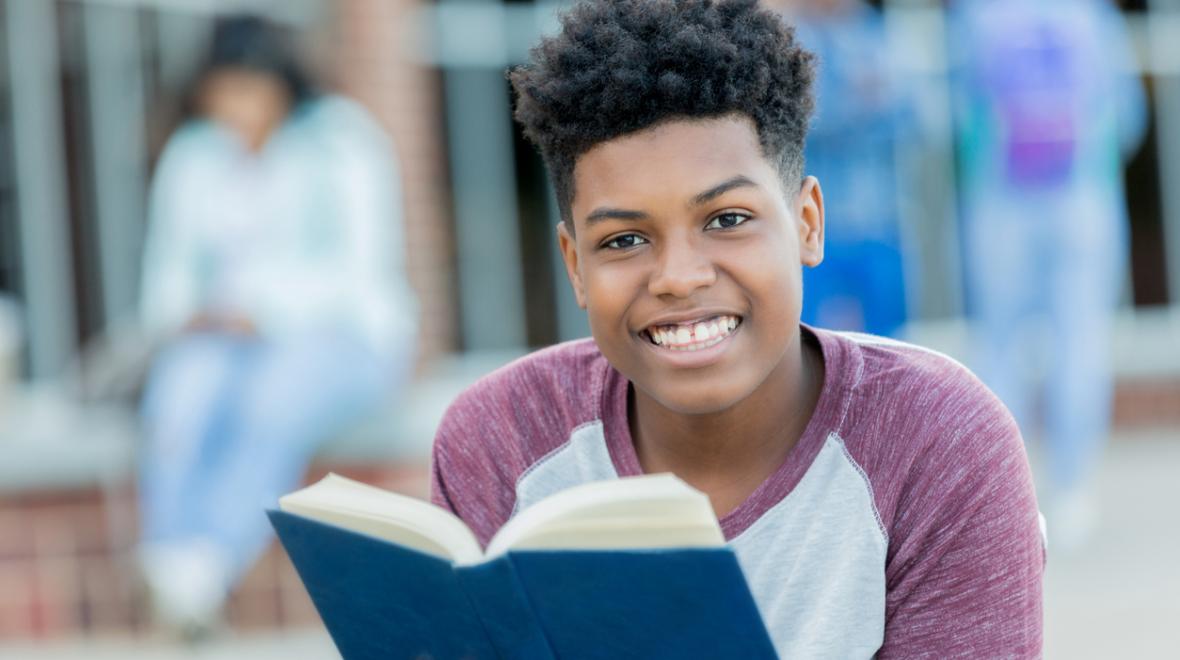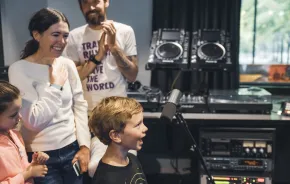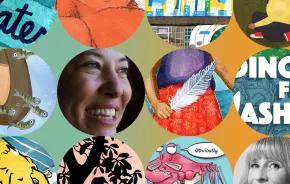
In a society that values strength over compassion and teaches boys that anger is the only acceptable emotion, neutralizing the stew of toxic masculinity is a challenge for parents. A good book can be a powerful ally in supporting the social and emotional development of boys. We’ve collected some of our favorite books for every age that celebrate boys who navigate life with the strengths and advantages of emotional intelligence.
Picture books and early readers
If you’ve already shared classics like “Alexander and the Terrible, Horrible, No Good, Very Bad Day,” “The Story of Ferdinand” and everything by Ezra Jack Keats, try these newer books. And when you’re done with them, check out a longer list of picture books with empathy at their cores by Seattle Public Librarians.
“ABCs of Kindness” and “Kindness Counts 1, 2, 3” (Highlights Books of Kindness)
This pair of picture books from children’s publisher Highlights combines basic literacy and counting with everyday kindness. The books present a diverse cast of children helping at home, sharing toys and expressing affection to friends and family.
“Drawn Together” by Minh Lê, illustrated by Dan Santat
This beautiful, gentle story, told mostly through pictures, presents an American boy visiting his Thai grandpa. Despite age, language and cultural barriers, they wordlessly bond over a shared love of art and draw imagined adventures together.
“William’s Doll” by Charlotte Zolotow, illustrated by William Pene du Bois
William enjoys his trucks and balls, but he still wants a doll. He doesn’t know that dolls give children a chance to explore nurturing behaviors through play. He just knows that playing with the doll his parents give him is as much fun as his other toys.
“I Am Human: A Book of Empathy” by Susan Verde, illustrated by Peter H. Reynolds
Follow a young boy as he grows and discovers the human experience, from curiosity and friendship to fear and hurtfulness. He learns that moving beyond the bad stuff requires thoughtfulness and apologies. The unnamed protagonist’s brown skin quietly defies the white-by-default approach too common in children’s literature.
“The Princess in Black” by Shannon Hale and Dean Hale, illustrated by LeUyen Pham
The Princess in Black routinely rescues Duff the goatherd from the monsters that try to eat his goats. Inspired by the princess, Duff develops his own hero identity as the Goat Avenger in the fourth book of the series. Every little boy should be as comfortable as Duff with female heroes and role models.
“The Sunflower Sword” by Mark Sperring, illustrated by Miriam Latimer
In a land ravaged by battles between knights and dragons, a little boy wants to join the fray. But his mother gives him a sunflower instead of a sword. When the boy points his sunflower sword at a dragon, it changes everything.
Middle-grade chapter books
Classic “boys’ books” such as “Encyclopedia Brown” and Jean Craighead George’s survival stories feature boys solving problems nonviolently. But for a wider range of emotional experience, try these modern middle-grade books. They just begin to scratch the surface, though, so follow up with a bespoke list courtesy of the Seattle Public Library at.
“Merc StoryiA” by Happy Elements
Okay, not technically a book. But this anime series has subtitles, so it still requires reading. The series involves a boy who encounters rampaging Pokémon-like monsters. Instead of capturing them to battle against each other, this boy overcomes fear to soothe their anger and help them solve their monstrous problems.
“Ghost” by Jason Reynolds
Everything by Jason Reynolds sensitively handles the emotional development of boys of color. A past Global Reading Challenge title, “Ghost” tells the story of a young boy whose track team helps him overcome the trauma caused by his jailed father’s violence.
“The PS Brothers” by Maribeth Boelts
Another Global Reading Challenge alumnus, “The PS Brothers” relates the adventures of best friends with big problems. They start a poop-scooping business so they can buy a rottweiler to protect them from bullies. But when they uncover a dogfighting ring, they must decide whether to sacrifice their dreams of owning one dog in order to help all of the dogs.
“Kiki and Jacques: A Refugee Story” by Susan Ross
Another Global Reading Challenge book (are you detecting a pattern?), “Kiki and Jacques” tells the story of an American boy whose small town is changed by the arrival of Somali refugees. Jacques already helps out at his grandmother’s bridal store and babysits the neighbors’ kids. Now he must extend his empathy to the newcomers and learn to speak up against bullies.
Titles for teens
Teens aren’t always open to parental reading recommendations, but we promise that these books do not read like after-school specials. And if you really need a neutral third party, share this library list instead.
“Anger Is a Gift” by Mark Oshiro
Moss Jeffries knows about violence — he witnessed his father being shot by the police — and he wants no part of it. The queer black teen just wants to hang out with his friends, get into college and overcome his panic attacks. But keeping your head down isn’t enough to avoid institutional racism and police violence. When Moss has had enough, he takes action — through peaceful protest and community activism.
“What I Leave Behind” by Alison McGhee
Despite the problematic leveraging of female suffering for male growth, readers are won over by the sensitive protagonist Will, who moves past his own grief by undertaking secret acts of kindness in 100 chapters of 100 words each.
“Love From A to Z” by S.K. Ali
Told in alternating journal entries, “Love from A to Z” gives its male and female protagonists’ feelings equal time on the page. Adam is facing a potentially fatal diagnosis alone to protect his widowed father. Outspoken Zayneb has been suspended after fighting back against religious intolerance. The gentle young man and fiery young woman pursue a relationship guided by their Muslim faith.
“The Gentleman’s Guide to Vice and Virtue” by Mackenzi Lee
The 18th-century gentleman in question moves from vice to virtue over the course of the book. Spoiled playboy Monty’s picaresque escapades on a grand tour of Europe puts his group in danger. As they try to stay alive, he begins to realize what a burden he has been to the people he cares about most: his brave and intelligent sister, and his love interest, Percy, who walks a tightrope every day as the biracial “poor relation” with a chronic illness.











